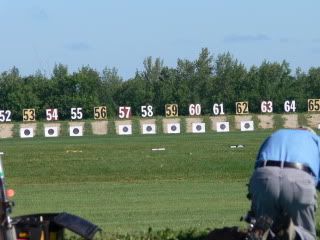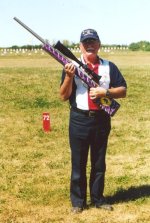Ryan,
Within the 7 minutes relay in point blank group match, if you can hardly see the mothball because of super heavy mirage (worst scenario)... chance is you can't repeat the point of aim...i.e. for a good group. (I've never shot in that worst scenario, yet). Very often you need to hold off, shoot as fast as possible ("stealing" for some seconds) and/or wait for the same condition. I would carefully watch wind pattern of the range (needs time), instead of the windflags, windprobes, and the mirage. I can actually use one or two or three of these elements as reference(s), depends on the condition & time limit, but I prefer to watch at least two elements. If there is no (or not much) mirage, I usually watch the windflags & probes only & set the scope focus exactly at the target, but still aware with the wind pattern of the range because it can help to judge when to start to shoot for the record.
So in order, personally I will watch the windflags (#1), the probes (#2), then the mirage (#3). But in condition with heavy mirage I try to watch three of them at a time and see how they displace the bullets on target.
Fortunately in point blank BR, we have a black square on top of the mothball. You still can see it even in heavy mirage.
I have never shot BR competition beyond 500 meters, so far, so I can't comment...
seb.




